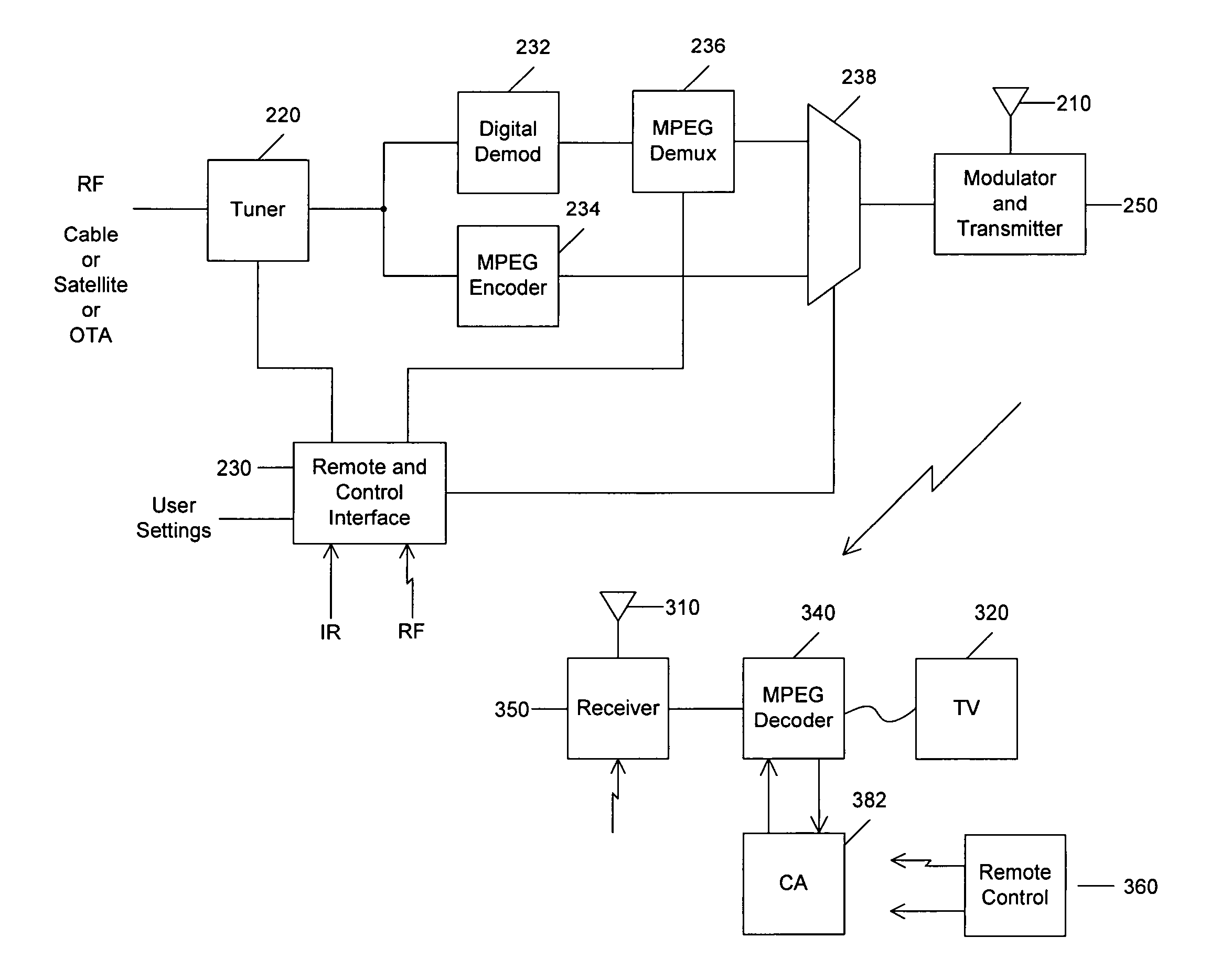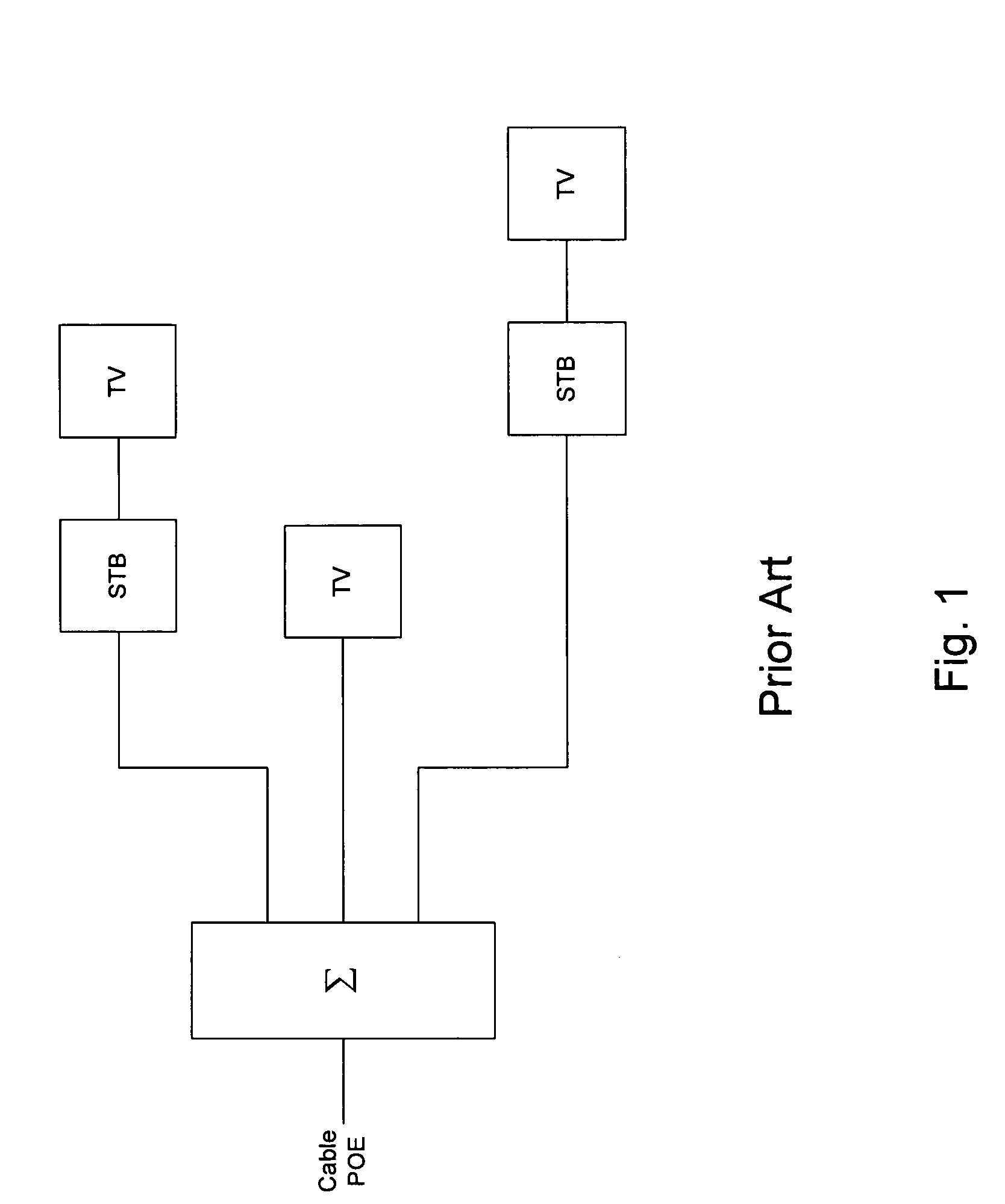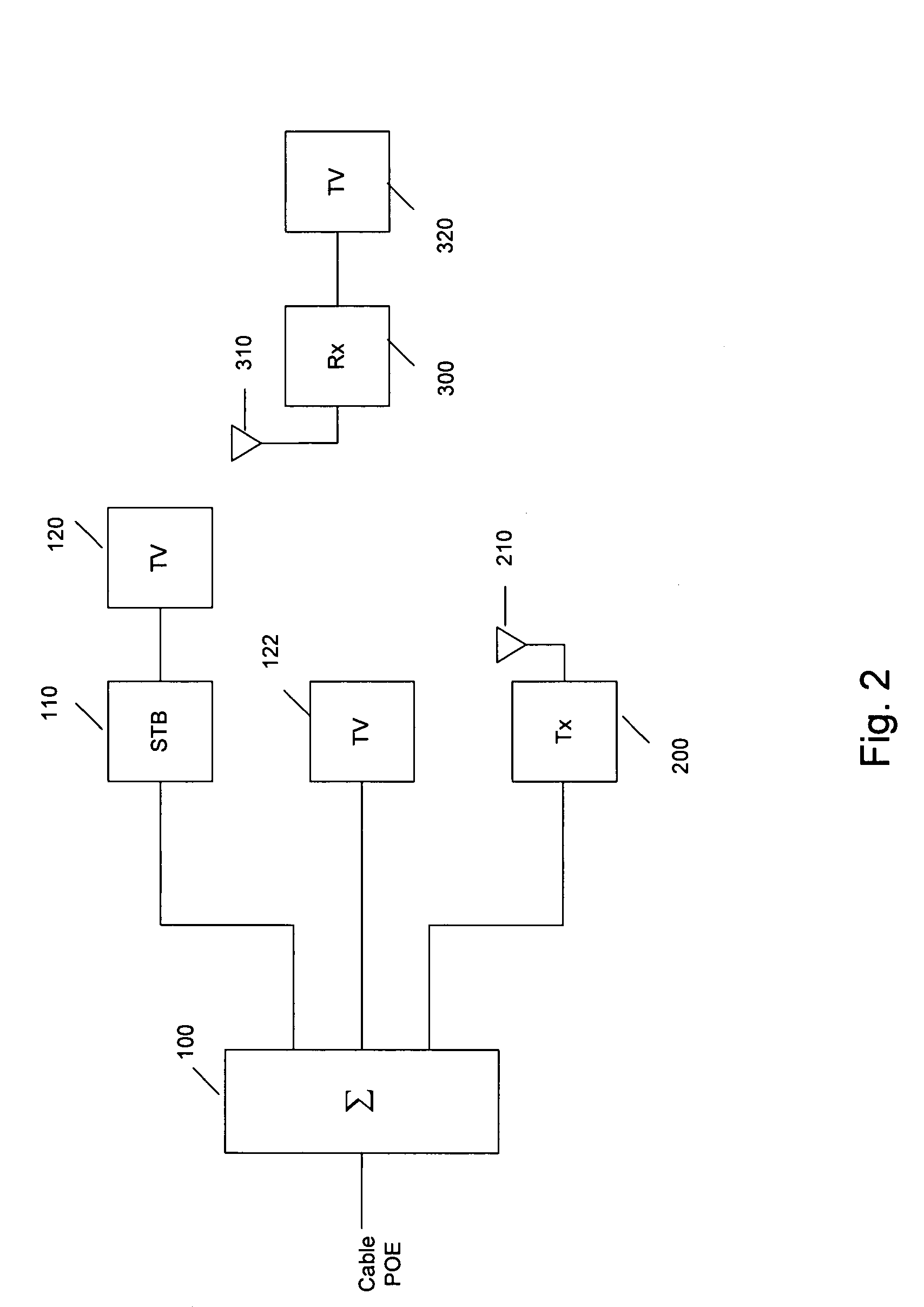Wireless extension for cable television signals
- Summary
- Abstract
- Description
- Claims
- Application Information
AI Technical Summary
Benefits of technology
Problems solved by technology
Method used
Image
Examples
Embodiment Construction
[0022]Referring to FIG. 2, splitter 100 divides power among several cables, which are connected to set top boxes (STB) 110 or directly to televisions 122. STB 110 tunes a channel and delivers a signal to television 120. Wireless link sending unit 200 receives the cable signal, tunes a specific channel and transmits digital information using transmitting antenna 210. Receiving antenna 310 receives the signal, receiver 300 tunes and decodes the link signal, and supplies a signal to television 320.
[0023]Referring to FIG. 3, tuner(s) 220 preselects, amplifies, and down converts one or more cable channels, typically 6 MHz wide each. The tuning process performed by tuner 220 is substantially the same for analog and digital channels; the channel tuned can be an analog channel or a digital channel. The tuner output can be at an intermediate frequency (IF) or baseband. Alternatively, two separate tuners can be used, one optimized for analog channels and one optimized for digital channels. Di...
PUM
 Login to View More
Login to View More Abstract
Description
Claims
Application Information
 Login to View More
Login to View More - R&D
- Intellectual Property
- Life Sciences
- Materials
- Tech Scout
- Unparalleled Data Quality
- Higher Quality Content
- 60% Fewer Hallucinations
Browse by: Latest US Patents, China's latest patents, Technical Efficacy Thesaurus, Application Domain, Technology Topic, Popular Technical Reports.
© 2025 PatSnap. All rights reserved.Legal|Privacy policy|Modern Slavery Act Transparency Statement|Sitemap|About US| Contact US: help@patsnap.com



